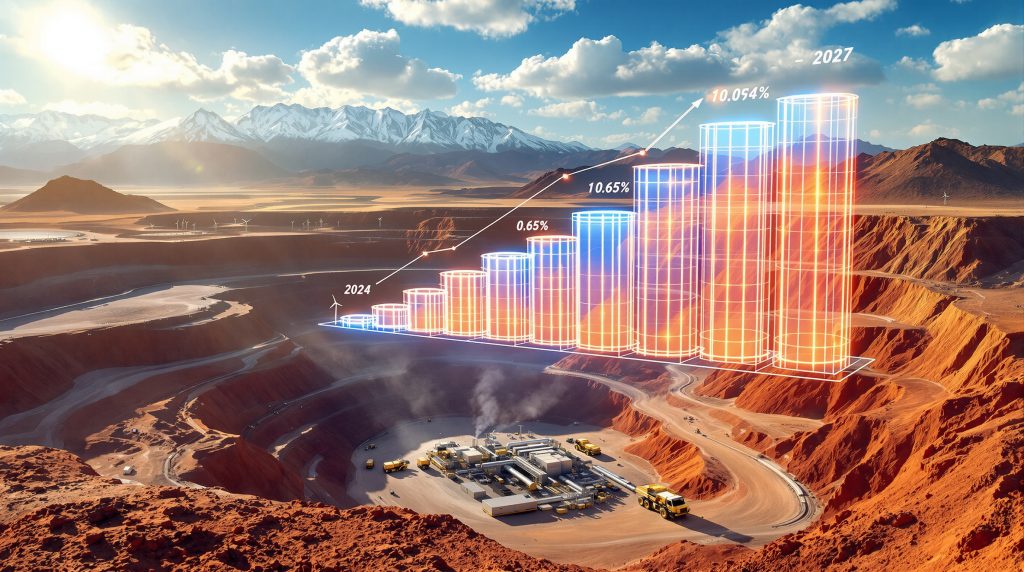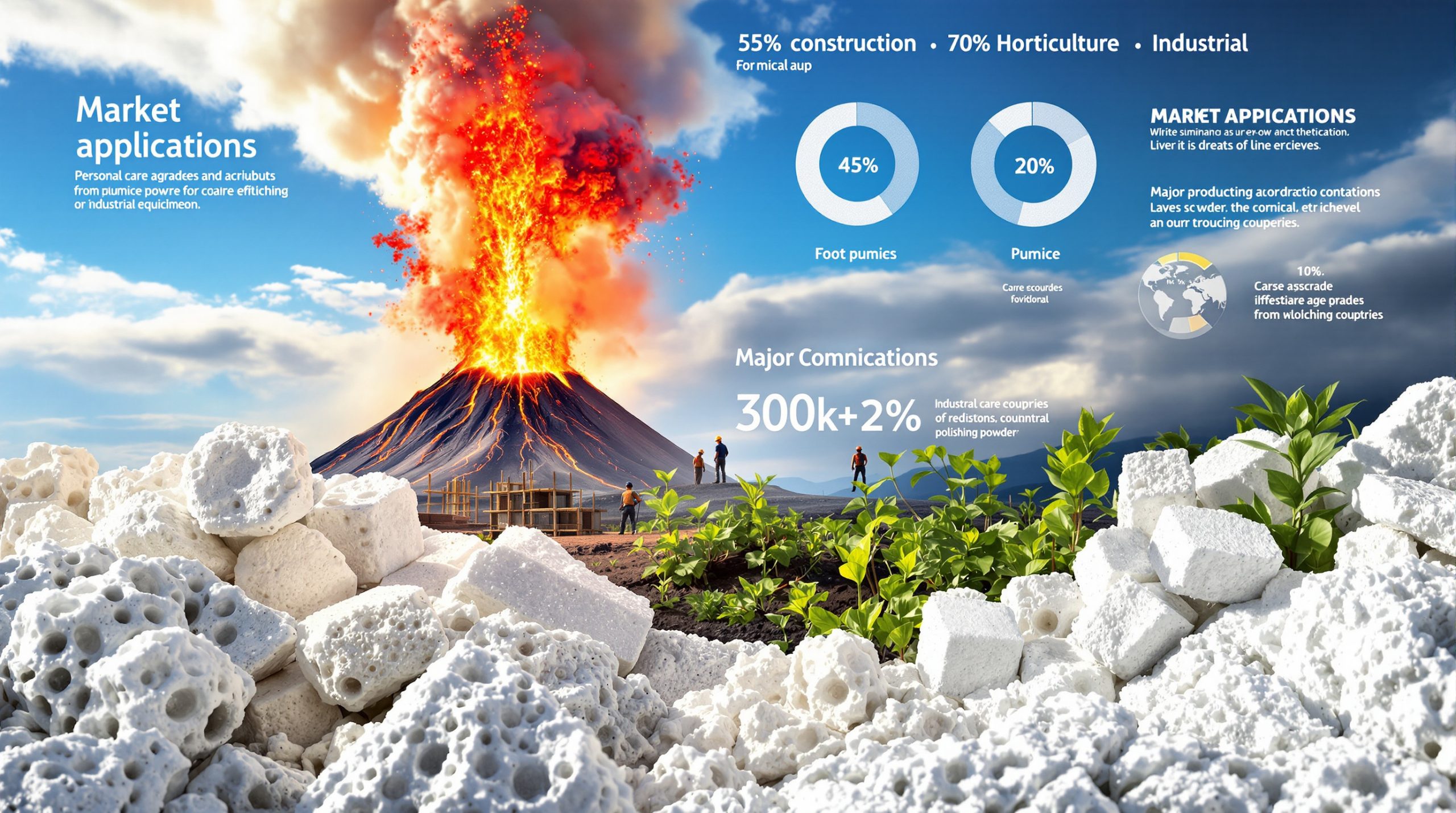Current Production Challenges at Major Chilean Copper Operations
Chile's copper mining sector navigates complex operational hurdles that fundamentally shape production trajectories through 2027. Mining operations across the Atacama Desert region confront declining ore grades, severe water limitations, and infrastructure constraints that have pushed output below historical capacity levels.
Anglo American Chile copper mine output 2027 projections depend heavily on resolving these current bottlenecks. Collahuasi, the flagship operation jointly owned by Anglo American (44%) and Glencore (44%), exemplifies these challenges as it works through lower-grade ore sections while awaiting critical infrastructure completions.
The northern Chilean mining districts present unique environmental constraints including extreme aridity and complex geological formations. Operations must balance ambitious production targets with sustainable resource management while maintaining cost efficiency in an increasingly competitive global market. Furthermore, insights from mineral exploration insights demonstrate the complexity of accessing deeper ore reserves.
Primary Production Constraints:
- Declining ore grades at mature open-pit operations
- Critical water supply limitations in desert mining regions
- Processing capacity bottlenecks affecting throughput
- Environmental compliance requirements extending project timelines
- Infrastructure dependencies creating operational vulnerabilities
How Will Water Infrastructure Impact 2027 Copper Output?
Water availability represents the single most critical factor determining Chile's copper production capacity through 2027. Advanced desalination facilities under construction will fundamentally transform operational capabilities across multiple mining districts, eliminating the primary constraint that has limited expansion potential.
According to Anglo American's Chief Operating Officer Ruben Fernandes, the new desalination plant at Collahuasi will reach full operational capacity by the end of the second half of 2026, enabling the mine to return to approximately 600,000 metric tons of annual copper production by 2027. This infrastructure investment eliminates production volatility previously caused by drought conditions and competing demands for limited groundwater resources.
Desalination Infrastructure Timeline:
| Phase | Timeline | Capacity Status | Production Impact |
|---|---|---|---|
| Initial Construction | 2024-2025 | Foundation phase | Continued constraints |
| System Integration | Mid-2026 | Partial capacity | Gradual improvement |
| Full Operations | End H2 2026 | Complete capacity | Normal production restored |
| Optimized Performance | 2027 | Enhanced efficiency | Target output achieved |
The transition from groundwater dependency to seawater processing creates operational independence from regional climate variations. This infrastructure enables sustained high-capacity operations regardless of precipitation patterns or agricultural water demand fluctuations that previously disrupted mining schedules.
Seawater desalination technology deployment addresses the fundamental constraint limiting Chilean copper expansion. Advanced processing systems will provide reliable water supplies supporting both current operations and future expansion projects across the region's mining districts.
Which Geological Factors Will Enable Production Recovery?
Mining operations across Chile are transitioning into substantially richer ore zones that will significantly boost copper recovery rates by 2027. Advanced geological modelling has identified high-grade reserves with superior metallurgical characteristics compared to currently processed materials.
Collahuasi's geological transition strategy involves systematic progression through planned open-pit sequences designed to access progressively richer ore bodies. The strategic timing of this transition aligns with desalination facility completion to maximise production efficiency and operational coordination.
Ore Quality Improvement Trajectory:
The mine will reach areas with higher-grade material by the end of the second half of 2026, enabling the return to regular production levels. This geological transition represents a fundamental shift from lower-quality ore processing to premium-grade material extraction, dramatically improving both recovery rates and operational economics.
Moreover, AI in mining operations are revolutionising how mining companies process geological data and optimise extraction sequences.
Geological Insight: Open-pit mining progression follows carefully engineered sequences that access deeper, higher-grade ore zones while maintaining slope stability and operational safety standards.
Higher-grade ore zones extend substantially deeper than initially projected in geological surveys, suggesting sustained production advantages extending well beyond 2027. Advanced extraction techniques will maximise recovery from these premium ore bodies while maintaining environmental compliance standards.
The metallurgical characteristics of deeper ore zones demonstrate superior copper concentration and processing efficiency compared to surface-level materials. This geological advantage enables enhanced production volumes with reduced processing costs per unit of copper recovered.
What Role Will Joint Venture Integration Play?
Strategic partnerships between major mining companies are reshaping Chile's copper landscape through coordinated development programmes and integrated operations. The Collahuasi joint venture structure, with Anglo American and Glencore each holding 44% stakes and a Mitsui-led consortium controlling the remaining 12%, demonstrates how collaborative approaches optimise resource utilisation.
Anglo-Teck Merger Integration Impact:
The planned merger between Anglo American and Teck Resources creates unprecedented integration opportunities. Collahuasi's high-grade ore will supply Teck's neighbouring Quebrada Blanca mine processing facilities, potentially adding 175,000 tons of copper annually with an estimated $1.4 billion annual profitability boost.
This integration model enables:
- Reduced capital expenditure per partner through shared infrastructure
- Enhanced technical expertise sharing across operations
- Coordinated environmental impact management programmes
- Optimised logistics and supply chain efficiency
- Strategic ore routing based on grade characteristics
Joint venture integration discussions will commence once regulatory and antitrust approvals are secured for the Anglo-Teck corporate combination. This regulatory approval process represents a critical milestone enabling full value realisation from the coordinated development strategy.
The collaborative approach maximises regional copper production potential by allowing smaller-scale operations to access world-class processing technology whilst larger operations benefit from expanded ore supply sources and shared infrastructure utilisation.
How Will Market Dynamics Influence Production Decisions?
Global copper demand projections through 2027 strongly support aggressive production expansion across Chilean operations. Annual copper demand growth of 2.5% to 3% over the next two decades drives unprecedented consumption requirements from multiple industrial sectors.
Critical Demand Growth Drivers:
- Electric vehicle manufacturing expansion requiring substantial copper content
- Renewable energy grid development and infrastructure deployment
- Data centre construction supporting artificial intelligence applications
- Industrial electrification initiatives across manufacturing sectors
Market analysts project that meeting 2.5-3% annual demand growth over twenty years would require approximately 30 to 40 new mines the size of Quellaveco in Peru, each producing about 300,000 tons annually. This supply requirement contextualises Collahuasi's 600,000-ton target as a critical contribution to global copper availability.
Furthermore, the global copper supply forecast indicates significant supply constraints that will benefit Chilean producers positioned to increase output.
Market Reality Check: Bringing new copper projects online typically requires 15 to 20 years from discovery to production, creating significant supply constraints relative to demand growth expectations.
Current market pricing provides substantial margins justifying infrastructure investments required for production optimisation. Chilean producers are strategically positioned to capture growth opportunities in an increasingly undersupplied global market experiencing supply setbacks across multiple regions.
Supply-demand fundamentals favour Chilean operations capable of achieving reliable high-volume output. The combination of growing industrial demand and constrained new supply development creates favourable pricing dynamics supporting continued investment in production capacity expansion.
What Are the Key Risk Factors for 2027 Targets?
Production recovery timelines face several potential disruption sources that could delay or reduce expected output levels. Technical execution risks, regulatory approval processes, and market volatility represent primary categories requiring strategic management attention.
Critical Risk Categories:
Technical Execution Risk: Desalination facility commissioning must achieve full operational capacity by the end of the second half of 2026 to support 2027 production targets. Any technical delays in this critical infrastructure directly jeopardise production recovery timelines and financial projections.
Regulatory Approval Risk: Integration with Teck Resources, necessary for the $1.4 billion profitability improvement, depends on securing regulatory and antitrust approvals. Delays in this approval process could postpone value realisation from coordinated operations.
Geological Risk: Whilst higher-grade ore zones have been identified through geological modelling, actual extraction may encounter unforeseen geological complexities affecting recovery rates or mining sequences.
Market Volatility Risk: Copper pricing fluctuations could impact investment decisions and production scheduling, particularly if sustained price declines reduce project economics or delay infrastructure completion.
Risk Mitigation Strategies:
- Phased commissioning approaches minimise operational disruption during infrastructure integration
- Redundant water supply systems ensure operational continuity during desalination ramp-up
- Flexible production scheduling accommodates regulatory requirement changes
- Comprehensive stakeholder engagement programmes address environmental and community concerns
Important Disclaimer: Production forecasts involve inherent uncertainties related to technical execution, market conditions, and regulatory approval processes that may affect actual results.
Which Technology Innovations Will Support Recovery?
Advanced mining technologies deployed across Chilean operations enhance productivity and operational efficiency supporting 2027 production targets. Digital transformation initiatives integrate operational data across entire mining value chains, enabling rapid response to changing geological and market conditions.
Technology Implementation Areas:
- Automated processing systems optimising extraction efficiency
- Real-time ore grade monitoring enabling immediate processing adjustments
- Predictive maintenance programmes reducing equipment downtime
- Integrated supply chain optimisation platforms coordinating logistics
- Digital geological modelling supporting mining sequence planning
Desalination technology represents the most critical innovation enabling production recovery. Advanced seawater processing systems provide reliable water supplies independent of regional climate conditions, eliminating the primary constraint affecting Chilean copper operations.
Machine learning algorithms optimise processing parameters to maximise copper recovery from varying ore characteristics encountered during geological transitions. These systems automatically adjust processing conditions based on real-time ore grade analysis and metallurgical testing results.
Additionally, mining industry evolution trends show how technological advancement across the sector supports improved operational outcomes.
Operational Benefits:
Technology integration reduces operational costs whilst increasing production reliability and worker safety. The combination of improved efficiency and enhanced safety protocols supports sustained high-volume operations meeting ambitious 2027 targets.
Advanced monitoring systems provide early warning capabilities for equipment maintenance requirements and geological condition changes. This predictive approach minimises unexpected production disruptions and optimises operational scheduling across integrated mining systems.
How Will Regional Infrastructure Development Impact Output?
Transportation and logistics infrastructure improvements across northern Chile eliminate bottlenecks previously constraining copper shipment capacity. Enhanced regional infrastructure supports both current operations and enables future expansion projects extending production growth beyond 2027.
Infrastructure Development Components:
Port Facility Enhancements: Capacity expansions enable efficient movement of increased copper production volumes to global markets. Improved loading and storage facilities reduce transportation costs and shipping delays affecting operational economics.
Rail Network Optimisation: Transportation efficiency improvements reduce logistics costs and enhance supply chain reliability. Enhanced rail capacity supports higher production volumes whilst reducing environmental impacts compared to truck transportation alternatives.
Power Grid Modernisation: Reliable electricity supply supports expanded processing operations and desalination facility requirements. Renewable energy integration reduces operational costs whilst meeting sustainability commitments required by international copper purchasers.
Integrated Timeline Benefits:
| Infrastructure Component | Expected Completion | Operational Impact | Long-term Benefits |
|---|---|---|---|
| Enhanced port facilities | 2025-2026 | Improved shipping capacity | Reduced logistics costs |
| Rail network upgrades | 2026-2027 | Higher transport efficiency | Environmental benefits |
| Power grid enhancements | 2026-2027 | Reliable energy supply | Renewable integration |
| Water infrastructure | 2026 | Production normalisation | Operational independence |
Regional infrastructure coordination creates synergistic benefits exceeding individual project contributions. Integrated planning ensures compatibility across transportation, power, and water systems supporting coordinated production expansion across multiple mining operations.
What Are the Long-Term Implications Beyond 2027?
Chilean copper production recovery through 2027 establishes foundations for sustained growth through the 2030s and beyond. Successful infrastructure deployment and operational optimisation create competitive advantages supporting continued global market leadership in copper production.
Strategic Positioning Benefits:
The integration of sustainable practices with high-volume production positions Chilean operations favourably for evolving environmental regulations and corporate sustainability requirements. This strategic approach ensures long-term viability in an increasingly environmentally conscious global market demanding responsible mining practices.
Successful execution of 2027 production targets demonstrates operational capabilities attracting additional investment capital for future expansion projects. This creates positive feedback cycles supporting continued technological advancement and production capacity growth.
Consequently, investors exploring copper investment strategies should consider the long-term implications of Chilean production recovery.
Post-2027 Growth Opportunities:
- Expansion into adjacent ore bodies using established infrastructure
- Advanced processing technology deployment enhancing recovery rates
- Integration with downstream copper processing and manufacturing facilities
- Development of specialised copper products meeting emerging market demands
- Regional expansion leveraging proven operational methodologies
Market Leadership Implications:
Higher-grade ore zones extending substantially deeper than initially projected provide sustained competitive advantages through the next decade. Advanced extraction techniques and processing optimisation will maximise value from these premium ore bodies whilst maintaining environmental compliance standards.
The combination of geological advantages, infrastructure investments, and technological innovations positions Chilean operations to meet growing global copper demand whilst maintaining cost competitiveness relative to emerging supply sources in other regions.
According to industry analysis, Anglo American Chile copper mine output 2027 expectations align with broader industry trends supporting sustained production growth throughout the region.
Strategic Outlook: Chile's comprehensive approach to production recovery demonstrates the coordinated planning and investment required to maintain global copper market leadership amid increasing demand and supply constraints.
Sustainable Growth Framework:
Long-term success depends on balancing production growth with environmental stewardship and community engagement. Chilean operations implementing comprehensive sustainability programmes will attract premium pricing from environmentally conscious global purchasers whilst ensuring regulatory compliance and social licence maintenance.
The successful achievement of 2027 production goals reinforces Chile's position as the world's dominant copper producer whilst meeting critical global demand for energy transition metals. This leadership position supports continued investment attraction and technological advancement throughout the Chilean mining sector.
Consequently, Anglo American Chile copper mine output 2027 projections represent more than operational recovery—they signify Chile's strategic commitment to meeting global copper demand whilst advancing sustainable mining practices.
Disclaimer: Production forecasts and financial projections involve inherent uncertainties related to market conditions, technical execution, regulatory approvals, and geological factors that may cause actual results to differ from expectations.
Ready to Capitalise on Major Mining Discoveries Before They Hit the Market?
Discovery Alert's proprietary Discovery IQ model delivers real-time notifications on significant ASX mineral discoveries, instantly empowering subscribers to identify actionable opportunities ahead of the broader market. Understand why historic discoveries can generate substantial returns and begin your 30-day free trial today to position yourself ahead of market movements.




